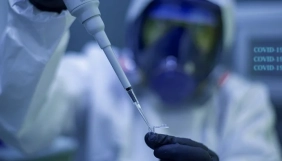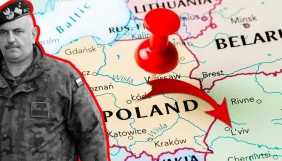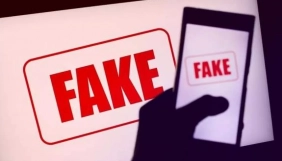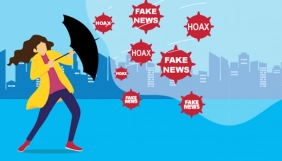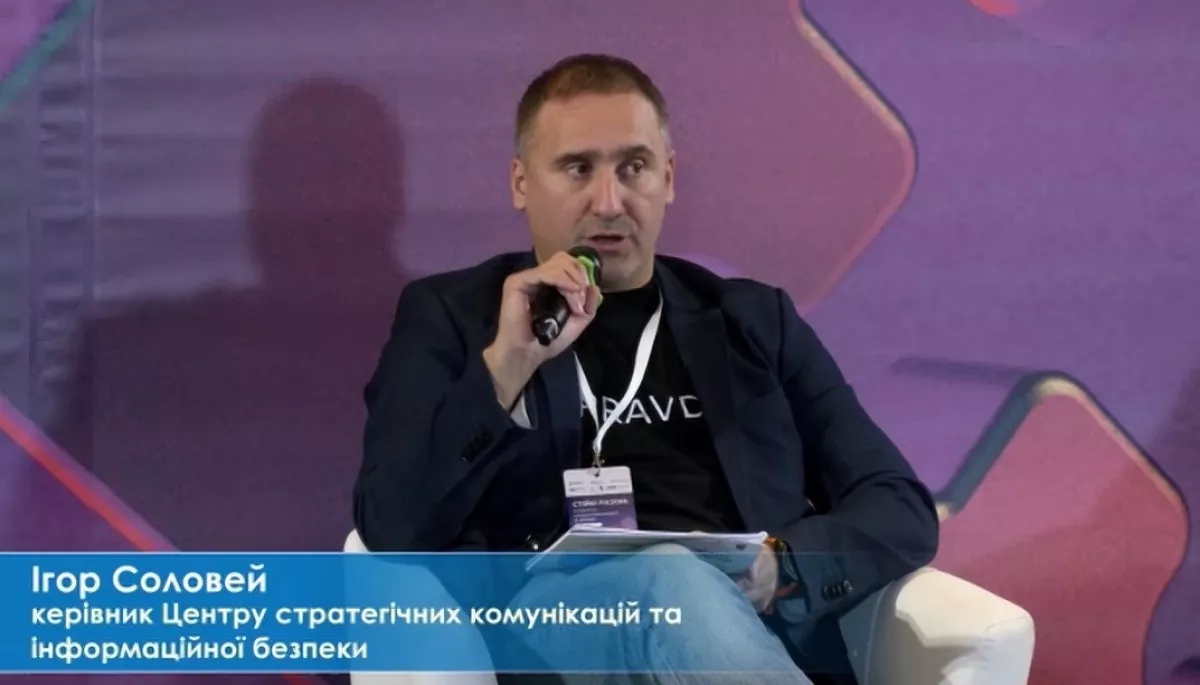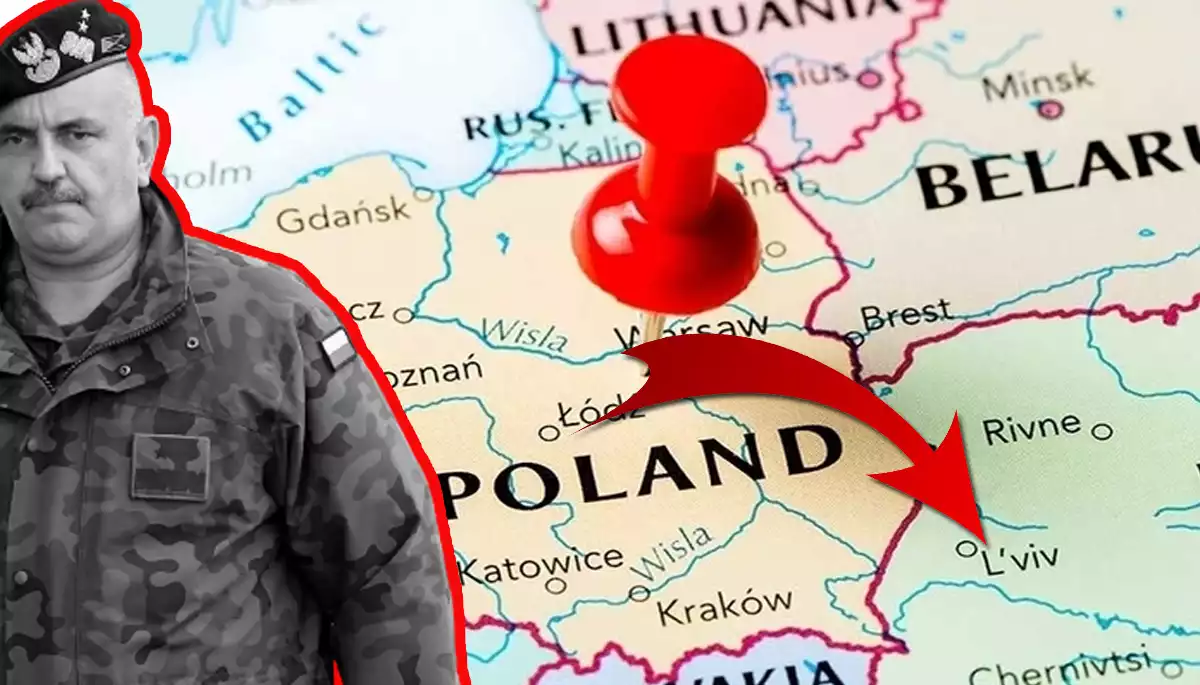
"The Absorption Of Ukraine Has Begun". Why Russia Invented A Fake About Poland's Intention To Annex The Western Regions Of Ukraine
"The Absorption Of Ukraine Has Begun". Why Russia Invented A Fake About Poland's Intention To Annex The Western Regions Of Ukraine
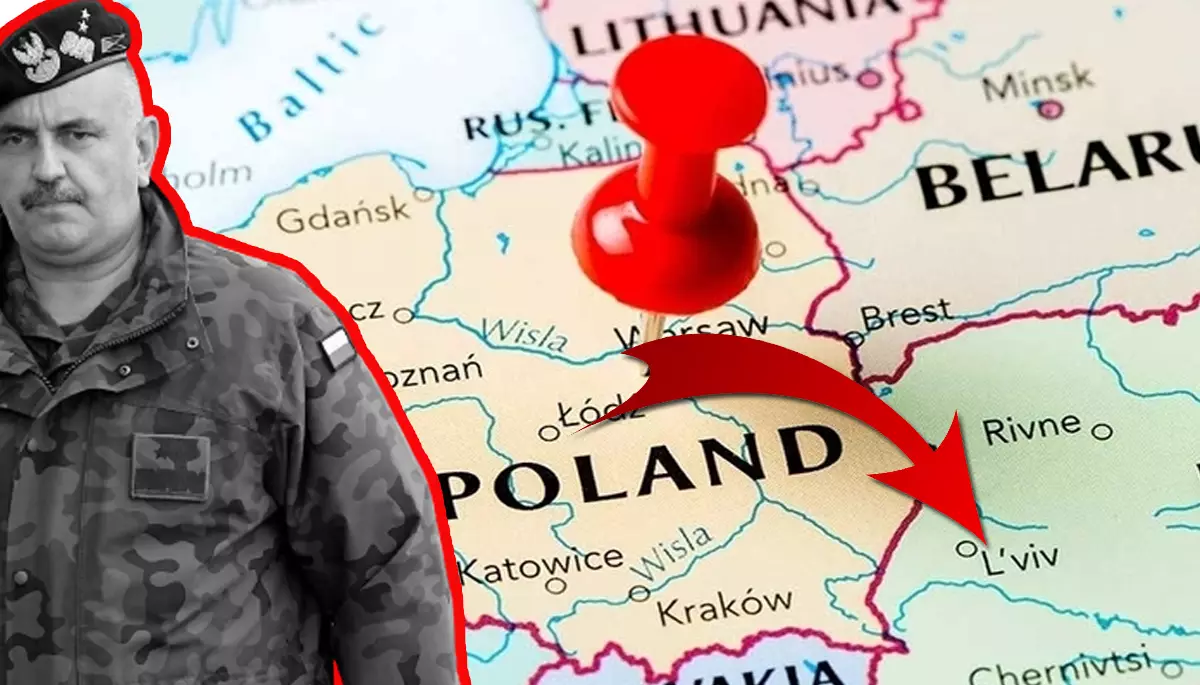

Українською текст читайте тут.
On the Russian National Unity Day on November 4, Vladimir Putin once again voiced a bunch of historical myths used by Russian propaganda and society to justify the attack on Ukraine. In particular, he reiterated the claim about the intentions of some Western countries to seize parts of Ukrainian territory. According to the Russian dictator, Hungary, Romania, and Poland plan to occupy the lands that used to be part of these states. Meanwhile, Russia allegedly prevents them from doing so and is in fact "the only guarantor of Ukrainian statehood and sovereignty".
The "guarantor" is a new addition, but the message about the "encroachment" of other neighbors, primarily Poland, on Ukrainian territories has been used by Russian propaganda for many years. However, after the outbreak of the full-scale war, analysts like the Center for Countering Disinformation found that this narrative intensified. Detector Media also observed the spread of this message and the emergence of its variations. MediaSapiens explains when this fake appeared and why Russia needs it.
When it all started
The myth of the "partitioning of Ukraine by its neighbors" originated with the spread of the narrative about an internal split of the country. The propaganda narrative about fundamental differences between the residents of western and eastern Ukraine has existed since Soviet times. But the first active use of this sentiment in the politics of independent Ukraine began in the parliamentary campaign of 2002. It was the year when Viktor Yushchenko's opposition force Our Ukraine won the elections. Amidst the 2004 presidential race between Yushchenko and Yanukovych, the "split" of the country was a constant talking point. Yanukovych's “political technologists” even created a map where Ukraine was divided into three parts or "grades": West was first grade, North and Center together with Kyiv were second-grade, and East, South, and the Crimea were third-grade.
The author of this "separation by grades" has allegedly been identified as the political technologist Volodymyr Hranovsky, who later worked with Khoroshkovsky on the Inter TV channel and with the then owner of the NewsOne channel Yevhen Muraiev, until in 2021, he became the executive producer and co-owner of the Nash TV channel with the same Muraiev. A future version of this map will serve as the foundation of the well-known map of a supposed partition of Ukraine between Russia and Poland with the preservation of a "neutral independent" part with its capital in Kyiv. By the way, according to Vox Ukraine, it was created by Polish journalists in 2014 to illustrate the absurd idea.
The Orange Revolution saw the first attempt to put the plan into action. A congress of deputies in Sievierodonetsk in November 2004 announced the creation of the "South-Eastern Ukrainian Autonomous Republic", which was derisively abbreviated in the Ukrainian media as PISUAR [urinal in Ukrainan, from PIvdenno-Skhidna Ukrainska Avtornomna Respublika]. The word "autonomous" in the name implied that the "republic" would remain part of Ukraine, however, there were calls for the PISUAR to join Russia. Almost immediately, pro-Russian propagandists began to speculate about the annexation of western Ukrainian regions by Poland.
The idea of the partition of Ukraine has been simmering in the Russian and even Ukrainian media, resurfacing from time to time, for example, with the help of the favorite astrologer of Russian propagandists Pavel Globa, who in the early 2000s allegedly prophesied the partition of Ukraine.
In 2014, after the seizure of Crimea and parts of the Donetsk and Luhansk regions, the fake about the partition of Ukraine between its neighbors intensified quite predictably. Russian politician Vladimir Zhirinovsky even officially sent letters to the governments of Poland, Hungary, and Romania with a proposal to partition Ukraine together with Russia. These countries called the proposal "absurd", but Zhirinovsky did not give up, repeatedly bringing it up on numerous TV shows. This year Zhirinovsky died, and the fake about Poland annexing part of Ukraine picked up steam again. After all, Russia started this war of aggression. And one of the key manipulative talking points, which Putin used to justify the aggression, actually concerned the "artificial nature" of Ukraine as a state.
Who and how spreads fakes about Ukrainian-Polish relations
Now the myth about Poland intending to annex part of Ukraine is being promoted at different levels. In addition to Putin, the head of the Russian Foreign Intelligence Service Sergei Naryshkin, the Secretary of the Russian Security Council Dmitry Medvedev, the spokesperson of the Ministry of Foreign Affairs of Russia Mariya Zakharova, and the Secretary of the Security Council of Russia Nikolai Patrushev addressed the topic. They were accompanied by former Ukrainian MP from the Opposition Platform — For Life Ilia Kiva, former Prime Minister of Ukraine Mykola Azarov, "president" of Belarus Alexander Lukashenko, as well as numerous bloggers, military officers, and self-styled "political analysts", such as Yuriy Podolyaka and Yakov Kedmi.
The fake about Poland's aggressive intentions towards Ukraine has multiple versions. Sometimes it is about armed occupation, sometimes about political unification, and sometimes about economic conquest, i.e. turning Ukraine into a source of raw materials. Depending on the event in Ukraine's life that Russian propaganda chose to use for its next disinformation wave, the conquest tools vary.
For example, the first "explosion" of fake news after the start of the invasion occurred in March 2022, when an international delegation consisting of Polish Prime Minister Mateusz Morawiecki and Deputy Prime Minister, Chairman of the Committee on National Security and Defense Jaroslaw Kaczynski visited Ukraine. They came to Kyiv together with the Prime Minister of the Czech Republic Petr Fiala and the Prime Minister of Slovenia Janez Janša. What, according to Russian propagandists, could foreign guests do here? Of course, to prepare the ground for the "annexation" of western Ukrainian lands.
In the absence of international events that can be used as "evidence", Russian propagandists resort to fabrications. For example, in May, a document was circulated with an alleged order from the commander of the Polish army, General Jaroslaw Mika, "to inform the personnel of certain units about the readiness to take control of strategic facilities in two regions — Lviv and Volyn". A little later, telegram channels linked to the Kremlin's special services ("Legitimnyi", "Spletnitsa", "ZeRada" and others) spread a photo of billboards, allegedly placed in Poland, with the image of Jaroslaw Mika and a quote: "Time to remember history". The propagandists claimed that this phrase is a call for the annexation of Ukrainian regions that were part of Poland before World War II. Both the general's order and the billboards turned out to be fake.
The most common message about the armed takeover is as follows: Washington and Warsaw agreed to send Polish troops to Ukraine independently of NATO (so as not to provoke a conflict between Russia and the Alliance), for which Poland was allowed to take control of western Ukrainian territories. "According to the projections of the Polish administration, the preventive consolidation in the west of Ukraine with a high degree of probability will lead to its split — and Warsaw will gain control of the territories, which will be occupied by Polish peacekeepers," said Naryshkin. These statements made Lukashenko so concerned about the fate of Ukrainians that he even offered to help. "I'm afraid that Ukrainians will soon have to stop the slaughter with Russia and turn to us to protect them from this polonization," Lukashenko said.
The variant about "political accession" emerged in May, when Polish President Andrzej Duda visited Ukraine. He spoke about a new friendship agreement between Poland and Ukraine, and Volodymyr Zelenskyy announced the possibility of creating a single conditional border when Ukraine becomes a member of the European Union. Russia immediately stated that "Ukraine and Poland are abolishing borders" and concluded that "the absorption of Ukraine has begun". Anyone who has ever traveled from Ukraine to Poland or from Poland to Ukraine in recent months will confirm that this is a blatant lie — borders, queues, and checkpoints continue to operate. However, the Russian audience is not trained to check information, so it accepted the false information without question.
A second episode involving fake news intensification occurred in July, when President Volodymyr Zelenskyy submitted to the Verkhovna Rada a draft law on the special status of Polish citizens in Ukraine, developed in response to the law on assistance to Ukrainian citizens adopted by the Polish parliament in March. Although it does not contain any provisions that would provide for Ukraine's accession to Poland, Russian propaganda saw the title of the document as direct "proof" of Poland's seizure of Ukraine.
The plethora of fakes about political accession didn't come without falsified evidence. For example, in July, Russian propagandists distributed a fake photo of price tags from stores in Ternopil and Lviv regions for basic products (buckwheat, eggs, and cabbage), with prices indicated in both hryvnias and zlotys. (In fact, something like this might have been appropriate before the coronavirus epidemic and the great war, when many Polish tourists came to Ukraine. But now there are almost none of them here, and there is therefore no need for prices in the Polish currency.) In September, Russians began publishing fake photos of ballots for a "referendum" in the Lviv region on the region's accession to Poland.
The "economic seizure of Ukraine" also captured the imagination of Russian propagandists in September, when Ukraine announced that it intends to build a pipeline with Poland to transport Ukrainian sunflower oil to the Polish port of Gdansk. Despite the explanation of the Ministry of Agrarian Policy and Food of Ukraine that a primary reason for this project is Russian aggression, which is why it is necessary to look for new ways to sell Ukrainian agricultural products, Russia said that Poland began an "economic seizure" of Ukraine. And in October, Russia announced that Poland is building an energy bridge from Khmelnytsky NPP to Rzeszow because it wants to capture Ukraine.
Another story is Poland's assistance to Ukraine in the areas of military, economic, and humanitarian aid. Russian propagandists systematically spread messages that devalue Poland's assistance and provoke hostility between Poles and Ukrainians. According to Russian propaganda, Ukraine will have to pay for everything that Poland has given us — from weapons to humanitarian aid — either with land, raw materials, or slaves. By the way, according to the Russians, Ukrainian refugees who settled in Poland are also only a resource for Poland: women are sold into sexual slavery, and children are either adopted or "sold for organs".
The most recent fake on the "Polish" topic appeared on November 14. This is a variant of the message that Poland is returning "its territories" with the help of Polish peacekeepers, but the latter have been replaced by Polish mercenaries who are allegedly fighting for Ukraine. In fact, although there are Polish volunteers in the foreign legion of the Ukrainian army, it is a relatively small number of people who, even if they wanted to, would not be able to "take control" of entire regions. However, the Russian audience does not understand this, having been misled for months into believing that it is "mostly foreign mercenaries" who are fighting on the side of Ukraine.
Why Russia needs this
"Russian news are a kind of information missiles aimed at causing panic," President Volodymyr Zelenskyy commented on the emergence of another fake news about the seizure of part of Ukraine by Poland at a briefing for the Polish media.
Russia likes to blame others for what it does or intends to do itself. "Ukraine has been bombing Donbas for eight years", "Ukraine is torturing civilians", and "Poland wants to seize Ukrainian lands" — all of these statements are in the same vein, absolving Russia of its culpability for the aggression. They are primarily aimed at the domestic Russian audience, but sometimes they are useful in the international arena. For example, they replenish the arsenal of Putin's supporters in other countries.
Fakes about Poland are also an attempt to disrupt relations between Ukraine and its allies, to discredit one of our closest partners. The relations between Ukraine and Poland have had difficult moments in the past — not regarding the "territorial claims" invented by Russia, but the events of the 1940s in Volyn, the forced expulsion of Ukrainians, etc. Russia is well aware of all these problems and has been adding fuel to the fire for many years, including in the Polish media space.
"Russian propaganda intensifies its information warfare in order to break the will and readiness of the allies to continue supporting Kyiv, and invents far-fetched pretexts for strikes on civilian and energy infrastructure of Ukraine," said the spokesman of the Minister-Coordinator of Special Services of Poland Stanisław Żaryn. According to him, Russian propaganda promotes these messages in the global information sphere with the intention to "portray Poland as a warmonger and isolate Warsaw from the international community".
Poland was the first in the world to officially recognize the independence of Ukraine and since then has not deviated from the chosen course. The leaders of this state have repeatedly expressed their support for Ukraine's aspiration to become a part of the European and Euro-Atlantic communities, preserve its territorial integrity and sovereignty. In March, the Polish government officially stated that the narratives about Poland's hostile intentions towards Ukraine and its alleged desire to occupy the western regions of Ukraine are part of Russian aggressive propaganda and disinformation, and in October, the Polish Senate recognized the Russian government as a terrorist regime.
In addition to the fact that Poland is a member of the EU and NATO, i.e. it is bound by its commitment to respect another nation's sovereignty, according to analysts, Poland is also clearly aware that its security and stability directly depend on the situation in Ukraine. This was also demonstrated by the missile that fell on the territory of Poland as a result of Russian shelling on November 15.




